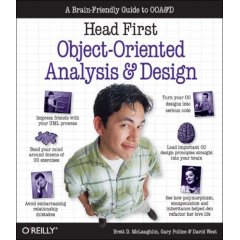I believe that good technical books fall roughly into 3 categories:
- Required reading now but throwaway later: these books go out of date quickly (for instance, that thick copy of plain ASP 3.0, which is now almost completely useless!)
- Essential, technology agnostic, lifespan of more than 10 years: containing advice which applies across the board regardless of technology, language or version. These are often process related books. Examples of books in this category are “Code Complete”, and the excellent, recently released “Head First OO A & D” (review to follow shortly).
- Essential, technology specific, lifespan hard to measure due to possibility of rapid technology shifts: vital books targeted at some specific technology or language.
The Framework Design Guidelines by Brad Abrams and Krzysztof Cwalina falls mainly into the last category, but also overlaps somewhat with the second.

Who should read this book?
Architects, API and Framework designers, lead developers, junior developers who want to be senior developers(!). Basically, anyone who is designing frameworks or writing code targeting the .NET framework.
The book is divided into 9 chapters and 3 appendices. The guidelines are presented in 4 major forms: Do, Consider, Avoid and Do Not. The authors choose a single language for the examples (which are in C#), which rather being a snub to VB.NET developers is rather more of a complement, as they mention they wanted the book to appeal to the widest audience. A DVD is also included containing several hours of video presentations.
This book represents the condensed wisdom and best practices of literally hundreds of developers, and a number of well known and respected, industry heavyweights have annotated the book, providing discussion and reasoning behind the guidelines.
1. Introduction
This chapter is a brief introduction and discusses the qualities of a well designed framework and the philosophy behind the design. In summary, frameworks are: simple, expensive, full of trade-offs, borrow from previous designs, are designed to evolve, are integrated and last but not least, are consistent.
2. Framework Design Fundamentals
Offers principles and guidelines central to framework design. Talks about scenario-driven design (very similar to TDD), having a low barrier to entry, self documenting wherever possible, the principle of layered architecture, API usability studies.
3. Naming Guidelines
Consistent and accurate naming is an essential principle of designing and writing all code. Krzysztof writes: “The team that develops the .NET Framework Base Class Library spends an enormous amount of time on naming, and considers it to be a crucial part of framework development.” As a consultant, poor method naming is something I see often. As Steven Clarke notes, methods should be named according to what they do, not according to some implementation detail.
4. Type Design Guidelines
This chapter provides general guidelines for the design of types and covers some of the associated subtleties and tradeoffs. This is a heavily annotated chapter, brimming with excellent advice.
5. Member Design
This is one of the slightly longer chapters (57 pages), and follows on from chapter 4, covering basic guidelines that should be followed when designing members of any type. It covers the design of properties, constructors, events, fields, operator overloads, and parameters. I seem to learn something new each time I re-read this and the preceding chapter.
6. Designing for Extensibility
How do you ensure that your framework will be extensible and stand the test of time? This chapter covers unsealed classes, protected members, events and callbacks, virtual members and abstractions. The annotations in this chapter contain several gems of advice, including determining the trade off of extensibility versus performance and some of the subtleties of creating types with virtual members.
7. Exceptions
This chapter is surely the definitive reference for exception handling. It covers the reasoning and benefits behind using exceptions and the best practices in creating and using them within frameworks. Required reading for all developers. [David M Kean posted excellent advice on which exceptions to raise here.]
8. Usage Guidelines
This chapter covers guidelines for the use of common types in publicly accessible APIs, implementing common interfaces and extending common base classes.
9. Common Design Patterns
Chapter 9 does not cover the subject of design patterns in general; rather it discusses a limited set of patterns that are frequently used in the .NET framework.
Conclusion
There is little doubt that a few paragraphs can adequately capture what is contained in the Framework Design Guidelines, or the amount of cumulative effort that has gone into producing this distilled wisdom. If you are a serious .NET developer then you should definitely have access to a copy of this must-read book.
My favourite quotes from the book:
“I have always felt that a key characteristic of a framework must be consistency”, Anders Hejlsberg in the foreword.
“Frameworks must be designed starting from a set of usage scenarios and code samples implementing these scenarios.”


